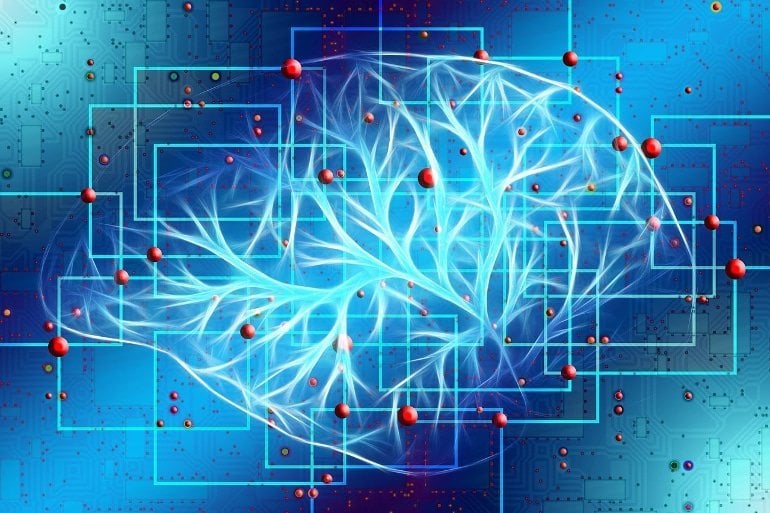Summary: If neural assemblies between the hippocampus and prefrontal cortex fail to sync together at the correct time, memories are lost.
Source: University of Bristol
Learning, remembering something, and recalling memories is supported by multiple separate groups of neurons connected inside and across key regions in the brain. If these neural assemblies fail to sync together at the right time, the memories are lost, a new study led by the universities of Bristol and Heidelberg has found.
How do you keep track of what to do next? What happens in the brain when your mind goes blank? Short-term memory relies on two key brain regions: the hippocampus and the prefrontal cortex.
The researchers set out to establish how these brain regions interact with one another as memories are formed, maintained and recalled at the level of specific groups of neurons.
The study, published in Current Biology, also wanted to understand why memory sometimes fails.
“Neural assemblies”—groups of neurons that join forces to process information—were first proposed over 70 years ago, but have proved difficult to pinpoint.
Using brain recordings in rats, the research team has shown that memory encoding, storage and recall is supported by dynamic interactions incorporating multiple neural assemblies formed within and between the hippocampus and prefrontal cortex. When the coordination of these assemblies fails, the animals made mistakes.
Dr. Michał Kucewicz, Assistant Professor of Neurology at Gdansk University of Technology, formerly a Ph.D. student at the University of Bristol, and lead author, said, “Our results make potential therapeutic interventions for memory restoration more challenging to target in space and time.

“On the other hand, our findings have identified critical processes that determine a success or failure in remembering. These present viable targets for therapeutic interventions on the level of neural assembly interactions.”
Matt Jones, Professor of Neuroscience in the School of Physiology, Pharmacology and Neuroscience and Bristol Neuroscience and senior author of the paper, added, “Our findings add to evidence that the neural substrates of memory are more distributed in anatomical space and dynamic across time than previously thought based on the neuropsychological models.”
The next steps for the research would be to modulate neural assembly interactions, either using drugs or via brain stimulation, which Dr. Kucewicz is currently doing in human patients, to test whether disrupting or augmenting them would impair or enhance remembering. The research team presumes the same mechanisms would work in human patients to restore memory functions impaired in a particular brain disorder.
About this memory and neuroscience research news
Author: Press Office
Source: University of Bristol
Contact: Press Office – University of Bristol
Image: The image is in the public domain
Original Research: Open access.
“Distinct hippocampal-prefrontal neural assemblies coordinate memory encoding, maintenance, and recall” by Aleksander P.F. Domanski et al. Current Biology
Abstract
Distinct hippocampal-prefrontal neural assemblies coordinate memory encoding, maintenance, and recall
Highlights
- Hippocampal-cortical (CA1-PFC) activity reconfigures during different memory stages
- Distributed CA1-PFC assemblies co-fire with 5 Hz rhythmicity during memory loading
- Tiled activation in PFC maintains memory across delay periods
- Collapse of rhythmic CA1-PFC assemblies heralds unstable delay coding and errors
Summary
Short-term memory enables incorporation of recent experience into subsequent decision-making. This processing recruits both the prefrontal cortex and hippocampus, where neurons encode task cues, rules, and outcomes. However, precisely which information is carried when, and by which neurons, remains unclear.
Using population decoding of activity in rat medial prefrontal cortex (mPFC) and dorsal hippocampal CA1, we confirm that mPFC populations lead in maintaining sample information across delays of an operant non-match to sample task, despite individual neurons firing only transiently.
During sample encoding, distinct mPFC subpopulations joined distributed CA1-mPFC cell assemblies hallmarked by 4–5 Hz rhythmic modulation; CA1-mPFC assemblies re-emerged during choice episodes but were not 4–5 Hz modulated. Delay-dependent errors arose when attenuated rhythmic assembly activity heralded collapse of sustained mPFC encoding.
Our results map component processes of memory-guided decisions onto heterogeneous CA1-mPFC subpopulations and the dynamics of physiologically distinct, distributed cell assemblies.







